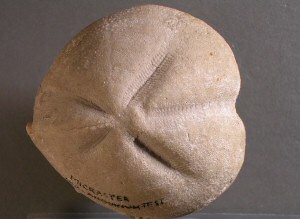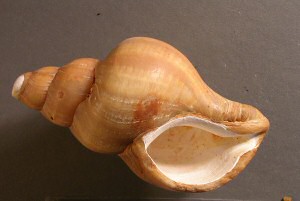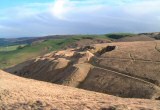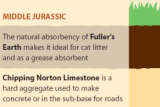

A rich past
British weather today is generally moderate, but the layers of rocks that lie beneath the Cotswold Hills Geopark tell of a dramatically changing climate. Some 170 million years ago, huge reptiles and shellfish thrived in a warm, shallow sea that covered the land. It is from the shellfish remains that the limestone that we now think of as typical of the Cotswolds was created.
When the seas receded and land emerged, dinosaurs roamed the earth. The abundance of fossils found across the geopark include footprints and vertebrae belonging to Megalosaurus – a meat-eating dinosaur up to three metres tall and weighing one tonne.
When the seasonal snow caps of the last Ice Age melted 12,000 years ago, they cut the valleys we see today.
You can find clues to our heritage across the geopark – in the wildlife, the landscape features and the exposed rock outcrops. Our aim is to make sure that these geological sites are properly preserved for future generations to enjoy.
A combination of both a natural and man-made landscape:
Postlip Valley with the 19th century quarries and spoil heaps of Postlip Warren on the flank.


